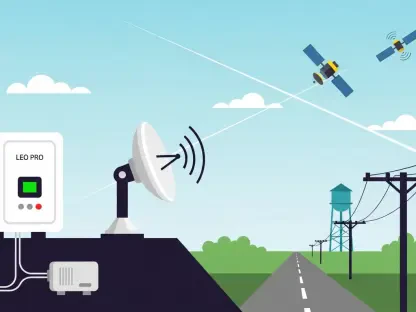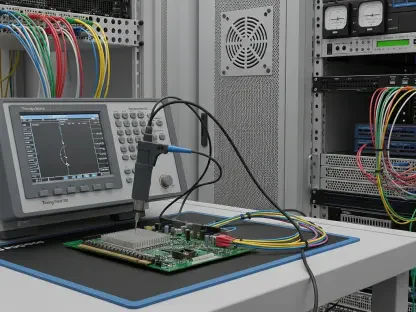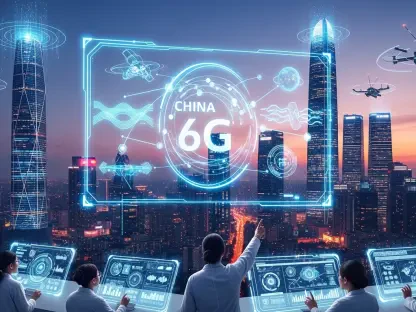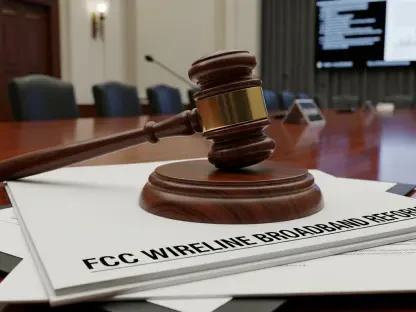As the telecommunications industry continues its rapid evolution, Verizon stands at the forefront of the 5G revolution, implementing strategic measures to shape the future of connectivity. Over the past few years, Verizon has focused on expanding its 5G infrastructure through the deployment of the C-band spectrum, a crucial midband frequency that plays a significant role in the company’s network development. This initial period of infrastructure expansion is giving way to a new phase where Verizon seeks to refine and extend the capabilities of 5G, moving beyond simple network coverage to optimize customer experience and harness the full potential of this cutting-edge technology. With significant investments and a clear vision, Verizon aims to enhance operational efficiency and diversify its services, setting the stage for transformative advancements in wireless communications.
Evolution of Verizon’s 5G Strategy
Verizon’s current trajectory marks a pivotal change as the company transitions from deploying its 5G infrastructure to expanding and refining its functionalities. Lynn Cox, Senior Vice President and Chief Network Officer, highlighted this strategic shift during the Connect (X) trade show, signaling a move towards completing 5G updates on existing macro towers within an 18-month timeframe. This timeline aligns with CEO Hans Vestberg’s roadmap, indicating that Verizon is determined to evolve beyond mere infrastructure enhancement. As the infrastructure phase nears completion, the company’s focus is on maximizing the performance and capabilities of the 5G network, tailoring it to meet the dynamic needs of consumers and businesses alike. This shift represents a strategic alignment driven by technological advancement and the competitive landscape’s demands.
The company’s devotion to innovation is evident in its significant investment in the C-band spectrum, a move underscored by its substantial outlay during a Federal Communications Commission auction. More than just expanding coverage, Verizon’s strategy revolves around integrating advanced technologies like Artificial Intelligence (AI), Reduced Capability (RedCap), and Multiple Input Multiple Output (MIMO). These enhancements aim to elevate customer experiences, streamline operations, and drive efficiencies across the network. This technical prowess has already noticeably increased 5G speeds, thanks to enhancements in infrastructure and partnerships with industry leaders like Ericsson and Samsung. These endeavors are not simply about staying ahead of competitors but about redefining what consumers can expect from a robust, future-forward 5G network.
Key Developments and Advancements
Verizon’s strategic roadmap is characterized by leveraging sophisticated technologies to not only augment the 5G network but also to deliver a seamless and enhanced user experience. By integrating AI into its operations, Verizon is tapping into emerging capabilities that allow for real-time processing and intelligent decision-making. This approach is set to refine customer interactions, optimize resource allocation, and contribute to transforming network functionalities. Additionally, the deployment of Reduced Capability (RedCap) technology plays a pivotal role in improving the network’s efficiency, catering specifically to a multitude of Internet of Things (IoT) applications, which are expected to proliferate in the coming years. As data demands increase, this forward-looking preparation sets Verizon apart, ensuring its network is resilient and capable of meeting future challenges.
The expansion of MIMO technology is another cornerstone of Verizon’s strategy, enhancing data transmission and further accelerating 5G speeds. By using advanced antenna technologies, the company aims to improve coverage and minimize latency, catering to the ever-growing demand for speedy and reliable mobile internet. Furthermore, innovations such as enhanced network slicing and private wireless networking are being explored, aiming to provide tailored services across various sectors, from industrial to consumer settings. Verizon also envisions strengthening its offerings in Fixed Wireless Access (FWA), particularly in buildings with multiple dwelling units (MDUs). By doing so, it maximizes its millimeter wave spectrum assets, setting the stage for superior connectivity solutions tailored to diverse environments.
Strategic Trends and Changes
As Verizon continues to evolve, adapting to the technological landscape, several strategic trends are set to redefine its operational framework and service offerings. The expansion into FWA, AI services, and IoT connectivity encapsulates the company’s ambition to broaden its reach and enhance product offerings. Verizon’s investment in edge computing infrastructure is integral to this strategy, providing the computational power necessary to support advanced AI services requiring high capacity and ultra-low latency. This is a decisive move toward establishing Verizon as a provider of robust real-time services, which are becoming increasingly pivotal in modern digital ecosystems.
In addition to AI and edge computing, Verizon plans to increase its use of 5G RedCap technology, targeting it toward a host of IoT applications primed for expansion. This is indicative of a strategy that encompasses not only enhancing user experiences but also an evolving business model that factors in diverse connectivity needs. The considerable emphasis on advancing MIMO capabilities signifies a commitment to surfacing faster connections via sophisticated antenna systems. Furthermore, Verizon is exploring opportunities within private wireless networks, a promising field that promises specialized services tailored to specific business environments. This suite of strategies emphasizes Verizon’s forward-thinking approach, cultivating a dynamic and responsive service landscape.
Industry Objectives and Policy Considerations
Verizon’s pursuits align seamlessly with broader industry objectives, resonating with policy goals advocated by organizations like the Wireless Infrastructure Association (WIA). Linda Cox’s keynote highlights the need for simplifying cell site modification permits to empower operators in expanding network capabilities rapidly. As such, streamlined regulatory frameworks are instrumental for operators like Verizon to forge ahead in their network expansion milestones without unnecessary bureaucratic hurdles. Echoing this sentiment, WIA calls for predictable, proportionate regulations not only at federal levels but equally at state, ensuring clarity and efficiency in operational rules across diverse regions.
Furthermore, the WIA advocates for expanded access to spectrum resources, championing their critical role in the future of connectivity. This push is part of efforts to further embed fixed wireless services within federal initiatives like the $42.5 billion Broadband Equity Access and Deployment (BEAD) initiative. Although challenges such as tariffs and local resistances present obstacles, the strategic direction of Verizon and similar carriers highlights a growing consensus on the necessity for supportive regulations. Such frameworks are key in enabling technological advancements and ensuring that futuristic wireless communication solutions are readily accessible, driving the sector forward in leaps.
Strategic Implications for Future Connectivity
Verizon is navigating a crucial juncture as it shifts from building its 5G framework to enhancing and expanding its features. Lynn Cox, the Senior VP and Chief Network Officer, underscored this strategic transition at the Connect (X) trade show, revealing plans to complete 5G updates on existing macro towers within 18 months. This approach fits with CEO Hans Vestberg’s roadmap, illustrating Verizon’s intent to go beyond infrastructure development. With infrastructure nearly complete, the company is concentrating on optimizing 5G network performance, adapting it to meet the evolving needs of consumers and businesses. This adjustment is a strategic alignment fueled by technological growth and market competitiveness.
Verizon’s commitment to innovation is shown in its hefty investment in the C-band spectrum, highlighted by spending big during a Federal Communications Commission auction. The strategy goes beyond coverage, focusing on integrating tech like AI, Reduced Capability, and Multiple Input Multiple Output. These improvements aim to boost consumer experiences, enhance operations, and ensure efficiency. Working with giants like Ericsson and Samsung, Verizon’s cutting-edge efforts have notably increased 5G speeds, redefining expectations of a forward-thinking 5G network.









